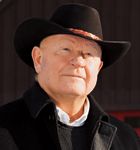Article
What dying patients want
After the author's father's death while at his bedside, the author says he returned to doctoring with a different approach to patients who were dying.

The 42-year-old divorced woman was admitted to the intensive care unit after a week of coughing, fever, anorexia, chest pain, and shortness of breath. X-rays revealed bilateral pneumonia. I spent much of the weekend at her bedside, carrying out the suggestions of consultants from infectious, pulmonary, cardiac, and renal services. Early on Monday, Mary Ellen died.
I'd felt really sorry for this woman, and her death was a frightening and humbling experience for me. All my excellent training had emphasized curing, and I thought no one was better equipped than I to diagnose and manage medical problems. Had I done something wrong? Reviewing the optimal care we had given her made me realize that not all patients get better; some die no matter how much medical attention they receive.
He was diagnosed with metastatic cancer of the lung and rapidly went downhill. I took a leave of absence from work to be with him while he was dying. He was my father, but also my best friend. He reminisced about the good times we'd had, the love and respect we shared for each other, and how proud he was of me. Then he said: "I'm going to kick the bucket; my time is up. I've had a great life with no regrets. I'll die a very happy man."
His condition deteriorated and he went into a coma shortly after being hospitalized. I was sitting at his bedside, holding his limp, cold hand, when his young doctor appeared at the doorway of his room. Without entering, the doctor said: "Your father is going to die soon." He then made a quick exit. His actions reminded me of my approach to dying patients.
My mother and brothers had gone home. I stayed with my father because...I felt a need to, and I wanted to. He remained unresponsive with rapid, shallow breathing, eyes closed, mouth opened, and audible gurgling from his pharynx (the death rattle). At 3:22 a.m., a moment I will never forget, he suddenly opened his eyes, looked at me, smiled, and said: "Ah, David, it's you." He squeezed my hand, released the grasp, and became unresponsive again.
I kissed him on the forehead, and whispered, "I love you Dad." It was the only kiss I ever gave him. Two hours later, he died.
I returned to doctoring with a different approach to patients who were dying. I recognized that patients don't always get better, but I could and would provide comfort when a cure was not possible. I stopped running and hiding from death...like staying only a minute in the room of a terminal patient to check the heartbeat. I spent time talking, listening, touching, and caring.
Something that humans have in common is that we all die. While still among the living, we can only imagine what dying people are experiencing. It's one thing to think about your death, and quite another to actually be told you have a short time to live. That's when fear, anxiety, depression, sadness, loneliness, or anger may appear. For most dying patients, it's not death that is terrifying, it's the process of dying.
Now, after 40 years of doctoring, and 6 years of being a hospice volunteer following retirement, I'm getting some idea of what dying patients want, and that for each person, it can be different. We can't always defer the inevitable terminal event of living, but we can take steps to ease it.





